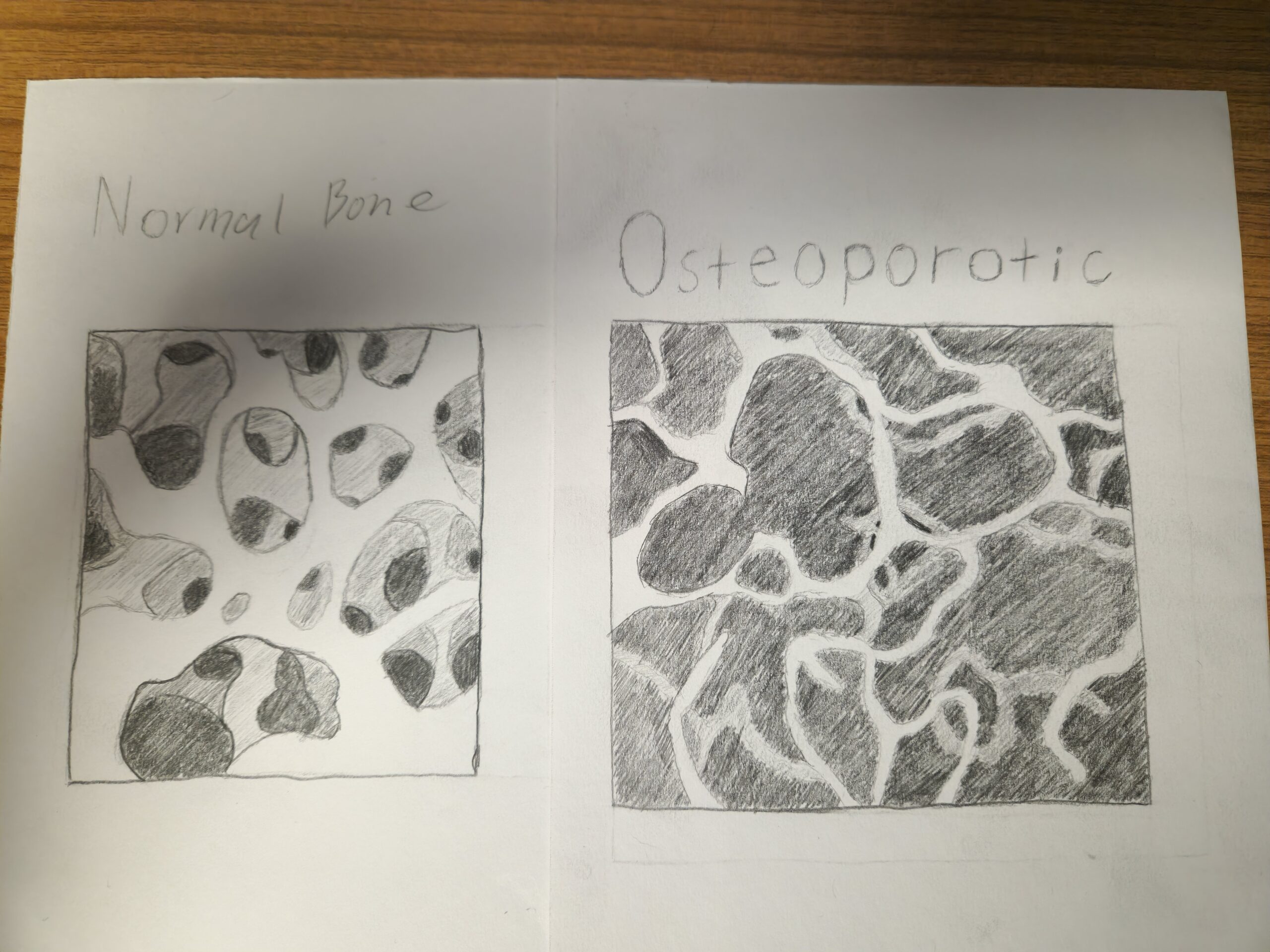
My steam project will be based around the following objective: “Explain how bone development is hormonally regulated”. My project will include illustrations of what a magnified cross-section of bone from both a man with a healthy testosterone level and a man with a testosterone deficiency.
When examining athletic performance before puberty, we can find little difference between the sexes. After puberty, however, is when differences are noticed. Circulating testosterone levels in males rise by around 30 times the original amount before puberty. Following this rise in testosterone, males generally perform higher when it comes to athletic performance. Not only this, but men tend to have a greater bone density and muscle mass as a direct result of the increased testosterone in their bodies. With this said, a man that has been exposed to too much testosterone should/would have increased bone density and a man that has been exposed to too little testosterone would have a greatly decreased bone density.
Osteoporosis is defined as a critical lack of structure within bone. It is shown that one of the main causes for osteoporosis is a deficiency of calcium in the body. While it may sound like the problem has already been addressed, it is because of testosterone that improved that body’s ability to send calcium to contribute to the internal structure of the bone. As men age, their ability to produce testosterone begins to wane after middle age and continues to decrease until the man dies. Due to the vastly decreased level of testosterone, women are at a much higher risk of being afflicted with osteoporosis. The same that is true for men is also true for women, with age comes an even greater risk of osteoporosis. Testosterone is an androgen, meaning that it is capable of regulating the growth and development of bone. They are able to accomplish this by stimulating the cartilaginous plates at the beginnings and ends of our bones and instructing them to generate more skeletal tissue. With a testosterone deficiency, there would be a weaker response from the cartilaginous plates. This would result in a weaker and brittle bone structure, or in other words osteoporosis.
As for the result of an overabundance of testosterone, the evidence suggests that extra usage of testosterone will provide a significant increase in bone density along with other additional effects such as muscle growth. The use of testosterone has also found efficacy as a form of treatment for patients with osteoporosis and other conditions relating to decreased bone density.
Sources:
Mohamad, N. V., Soelaiman, I. N., & Chin, K. Y. (2016). A concise review of testosterone and bone health. Clinical interventions in aging, 11, 1317–1324. https://doi.org/10.2147/CIA.S115472 Links to an external site.
Zhang, Z., Kang, D., & Li, H. (2020). The effects of testosterone on bone health in males with testosterone deficiency: a systematic review and meta-analysis. BMC endocrine disorders, 20(1), 33. https://doi.org/10.1186/s12902-020-0509-6 Links to an external site.
Handelsman, D. J., Hirschberg, A. L., & Bermon, S. (2018). Circulating testosterone as the hormonal basis of sex differences in athletic performance. Endocrine Reviews, 39(5), 803–829. https://doi.org/10.1210/er.2018-00020

I think that Benjamin did an excellent job at portraying the bone both with and without osteoporosis. He also did a great job at defining the key features of a how a bone develops osteoporosis and how the testosterone levels have an impact on the bone density and its development of osteoporosis. I think it was very well put together and very well thought out, however, I think a mention of any affect that low levels of testosterone has on the osteoclastic activity in males would also be a good detail to add in. Other than that, I think the project was done really well and that the drawings were very good.